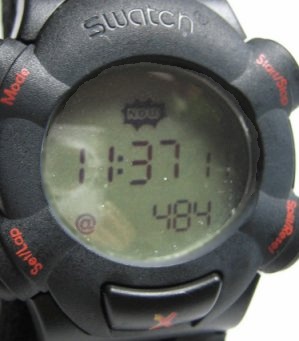.Beat – Internet Time
warning: nostalgia ahead. Proceed at your own risk
The web was wild and filled with Flash and <blink>-tags…
… and we called it CyberSpace.
It was a hopeful time (the web will fix everything! Love! Peace!*), a naive time and a time for experimentation – everyone and their dog had a website. You’d make it yourself by typing in raw HTML and probably host it on Geocities, filled with funky colors.
You would find new websites through Hotspot or Yahoo and do naughty stuff on Altalavista. The web was exciting, scary and edgy. You’d chat with random strangers on ICQ and wonder if we are all going to die because of Y2K. It was one big global experiment and we were all netizens.
The internet was hip! Everybody knew the ‘modem-song’ and you’d talk with your friends about cool websites you found (like zombo-com).
Ofcourse companies wanted in on this new “Internet Thing”.
In 1998 Swiss Watch-maker Swatch created the internet time, or .beats. The idea was to create a global timeframe, so you could setup meetings without worrying about pesky things like timezones. A wonderfully silly solution looking for a problem.
Obviously the notation is with an @-sign in front (duh, it’s INTERNET-time). Less obviously, a day lasts 1000 .beats, which means one time-unit is actually 86.4 seconds. Like I said, wonderfully silly.

So if you’re like me and you long for the good-old days, I’m bringing back a bit of nostalgia! From now on the internet-time is here on my website, ticking away in the sidebar!
Current internet-time in .beats: (turn javascript on)
*“The Internet has made human beings more globally conscious of being on a small planet where we are all really equal” - The inventor of internet-time, my personal hero, Nicolas Hayek